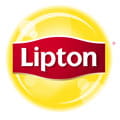Sodium sources: Where does all that sodium come from?

What’s the difference between sodium and salt?
Sodium and salt are often thought to be the same, but they’re not exactly. Sodium is a mineral that occurs naturally in foods or is added during manufacturing or both. Table salt is about 40% sodium and 60% chloride.
Approximate amounts of sodium in table salt:
- 1/4 teaspoon salt = 575 milligrams (mg) sodium
- 1/2 teaspoon salt = 1,150 milligrams (mg) sodium
- 3/4 teaspoon salt = 1,725 milligrams (mg) sodium
- 1 teaspoon salt = 2,300 milligrams (mg) sodium
What are common sodium sources?
About 15% of sodium is naturally in some foods, including celery, beets and milk. Many people add it while cooking and eating. The additions only account for about 11% of total sodium intake. So even if you never use the salt shaker, you’re probably getting too much sodium.
Sodium is often added in packaged and prepared foods, such as canned soups, lunch meats and frozen dinners — either as salt or other common forms of sodium such as baking soda.
Overall, more than 70% of the sodium we eat comes from processed and restaurant foods. It’s much harder to limit sodium when it’s already added before it’s bought. So choosing less-processed foods and making more meals at home are great ways to help control sodium intake. It’s also important to compare the Nutrition Facts label and choose products with the lowest amount of sodium you can find.
Other little-known places for sodium are in over-the-counter and prescription drugs. Check out the labels and ingredients in over-the-counter drugs. For prescription drugs, ask your health care professional or pharmacist if the medication is OK for you to take.
Watch your ingredients.
Sodium comes in many forms. Some of the more obvious ways it’s listed on nutrition labels are “salt,” “soda” and “sodium.” And sometimes, it’s hidden in multiple words that you may not recognize.
Ingredients that contain sodium include:
- Disodium guanylate (GMP)
- Disodium inosinate (IMP)
- Fleur de sel
- Himalayan pink salt
- Kosher salt
- Monosodium glutamate (MSG)
- Rock salt
- Salt
- Sea salt
- Sodium bicarbonate
- Sodium nitrate
- Sodium citrate
- Sodium chloride
- Sodium diacetate
- Sodium erythorbate
- Sodium glutamate
- Sodium lactate
- Sodium lauryl Sulfate
- Sodium metabisulfite
- Sodium phosphate
- Trisodium phosphate
Is sea salt or kosher salt healthier than table salt?
Foodies and chefs may prefer kosher or sea salts for their taste, texture or color. But table salt, kosher salt and most sea salts contain about 40% sodium. Sea salt may have some trace levels of minerals such as magnesium, potassium and calcium, but you can get them from other healthy foods.
Why is so much sodium in the food?
Sodium plays many roles in our food. Adding flavor is its most common function. Sodium also keeps food safe as a preservative, enhances a food’s color or adds texture. For example, baking soda (sodium bicarbonate) helps bread and other baked goods rise. Even though sodium plays a key role in many foods, more salt is often added than is necessary. The good news is that many food companies and some restaurants are tweaking their recipes to reduce sodium.








